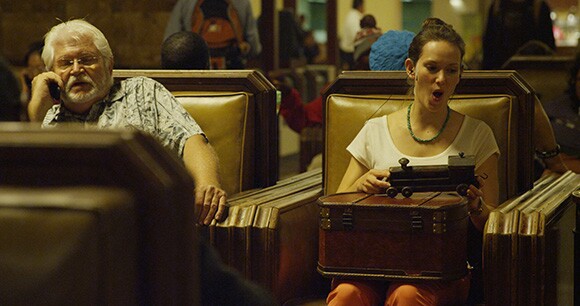Invisible Cities: The Finale

Artbound provides an exclusive look at the avant-garde opera, "Invisible Cities." Watch our one hour special focused on the making of "Invisible Cities." here.
What does it take to stage a "headphone" opera at Union Station? Over the last few weeks, Artbound's cameras and contributors have provided behind-the-scenes features examining the production components of innovative work "Invisible Cities." From an audio essay by composer Chris Cerrone detailing his inspiration for the opera, to a close-look at the wireless technology utilized by sound engineer Martin Gimenez, and a glimpse at the choreography created by Danielle Agami, here's a roundup with our five featurettes.

Invisible Cities: The Dematerialization of the Opera
The possibilities opened up by wireless headphones are endless. The use of wireless technology in "Invisible Cities" creates a new operatic experience -- and maybe even expands the definition of opera.

Invisible Cities: The Science of a Silent Opera
The sound designer behind "Invisible Cities" explains the challenges of getting wireless technology to deliver the extraordinary sonic experience that befits the unconventional opera.
Invisible Cities: Composing an Opera for Headphones
In composing the music for "Invisible Cities," Christopher Cerrone created many levels of orchestral detail that would evoke the elaborate and fantastical places that Calvino imagines.
Invisible Cities: The Choreography of Union Station
Dancers in "Invisible Cities" execute an array of moves in Union Station that range from rigorous solos to improvisational and hip-hop-like explosions, to glacially slow stances.
Finding Space in the Inferno: Observations on Calvino's 'Invisible Cities'
Union Station is an ideal place to realize the opera "Invisible Cities," an adaptation of Italo Calvino's book about relationships between built environments and social and economic life.
Dig this story? Sign up for our newsletter to get unique arts & culture stories and videos from across Southern California in your inbox. Also, follow Artbound on Facebook and Twitter.


